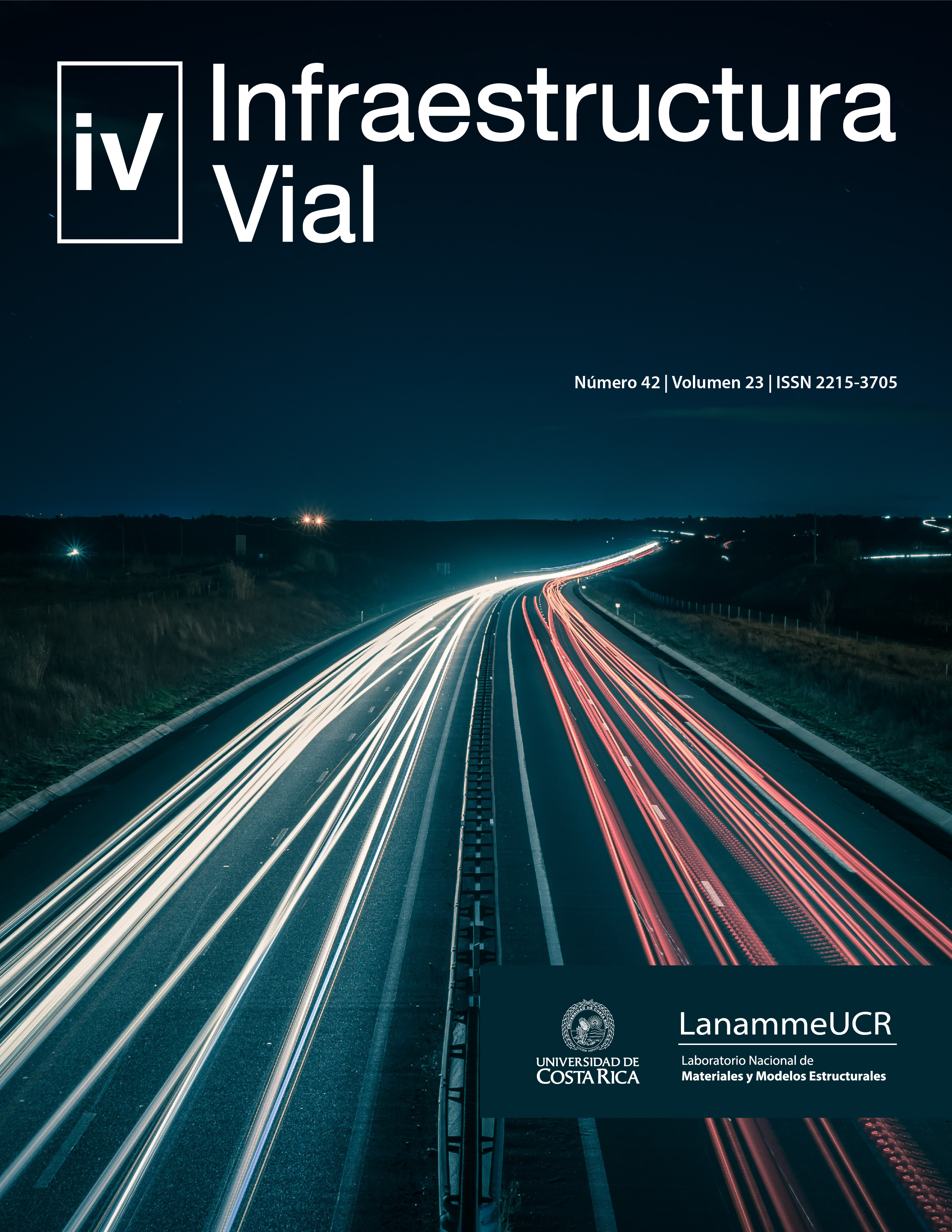Abstract
International organizations such as the UN recognize the importance of acting against climate change. For this reason, several countries such as Costa Rica, plan to achieve carbon neutrality in the coming years. As a result, the use of biodegradable materials in different applications has increased. In this regard, this article presents a sustainable alternative to asphalt mixture additives: the use of bamboo fibres. Therefore, one of the objectives of this research is to promote the use of bamboo, which holds multiple benefits to the environment such as: carbon fixation, avoids soil erosion, generates job opportunities related to cultivation, among others. It is worth mentioning that the culm fibres are used in this research as a final product and not as a waste, this way the plant grows again after harvesting, generating a sustainable cycle.
This research presents the analysis and mechanical performance of an asphalt mixture modified with bamboo fibres of the guadua angustifolia species. The main objective was to evaluate its mechanical behavior of the resulting mixture by means of the SUPERPAVE methodology. As a result, an improvement in the resistance of the mixture to fatigue and moisture damage was obtained, which is promising and opens a possibility to the use of fibres in these materials.
References
ASTM International (2015). Standard Test Method for Preparation and Determination of the Relative Density of Asphalt Mix Specimens by Means of the Superpave Gyratory Compactor (ASTM D6925-15).
American Association of State Highway and Transportation Officials (2017). Standard Specification for Superpave Volumetric Mix Design (AASHTO M323-17).
American Association of State Highway and Transportation Officials (2018). Standard Method of Test for Resistance of Compacted Asphalt Mixtures to Moisture-Induced Damage (AASHTO T283-14).
American Association of State Highway and Transportation Officials (2017). Standard Method of Test for Determining the Fatigue Life of Compacted Asphalt Mixtures Subjected to Repeated Flexural Bending (AASHTO T321-17).
American Association of State Highway and Transportation Officials (2019). Standard Method of Test for Hamburg Wheel-Track Testing of Compacted Asphalt Mixtures (AASHTO T324-19).
Brunner, F. (2018). El LANAMME elabora asfalto con sostenibilidad ambiental. Recuperado de: https://www.ucr.ac.cr/noticias/2018/07/10/el-lanammeucr-elabora-asfalto-con-sostenibilidad-ambiental.html
Castro, P. (2019). Diseño de mezcla SUPERPAVE para mezcla asfáltica en caliente. Pavimentos. Instituto Tecnológico de Costa Rica.
García, S. (2015). Contaminación por las refinerías. Recuperado de: https://www.elfinanciero.com.mx/opinion/salvador-garcia-linan/contaminacion-por-las-refinerias
Giraldo, E. (2020). La Guadua y sus aportes al ambiente. Recuperado de: https://guaduaybambu.es.tl/Aportes-Ambientales-Guadua--s--Bambu.htm
Jiménez, A. (2019). Análisis del desempeño de una mezcla asfáltica con fibra de bambú (Tesis de grado). Tecnológico de Costa Rica, Cartago. Recuperado de https://repositoriotec.tec.ac.cr/handle/2238/12221
Ministerio de Ambiente y Energía (2020). Programa País Carbono Neutralidad. Dirección de Cambio Climático. Recuperado de https://cambioclimatico.go.cr/metas/descarbonizacion/#:~:text=El%20Programa%20Pa%C3%ADs%20de%20Carbono%20Neutralidad%20Cantonal%20tiene%20como%20objetivo,en%20materia%20de%20acci%C3%B3n%20clim%C3%A1tica.
Ministerio de Obras Públicas y Transportes (2010). Manual de especificaciones generales para la construcción de carreteras, caminos y puentes CR-2010. San José, Costa Rica.
Moreno, L., Trujillo, E., y Osorio, L. (2007). Estudio de las características físicas de haces de fibra de Guadua Angustifolia. Scientia et Technica, 1(34), 613-617. DOI: 10.22517/23447214.5719
LANAMME UCR (2015). Metodología de diseño de mezclas asfálticas en caliente para Costa Rica. (LM-PI-UMP-026-R1).
Reyes-Ortiz, O., Troncoso-Rivera, J., y Reyes-Lizcano, F. (2005). Comportamiento mecánico y dinámico de una mezcla asfáltica con adición de fibras. Ciencia E Ingeniería Neogranadina, 15, 12-29. DOI: 10.18359/rcin.1251
Sheng, Y., Zhang, B., Yan, Y. Li, H., Cheng, Z., y Chen, H. (2019). Laboratory Investigation on the Use of Bamboo Fiber in Asphalt Mixtures for Enhanced Performance. Arabian Journal of Science and Engineering, 44, 4629–4638. DOI: 10.1007/s13369-018-3490-x


